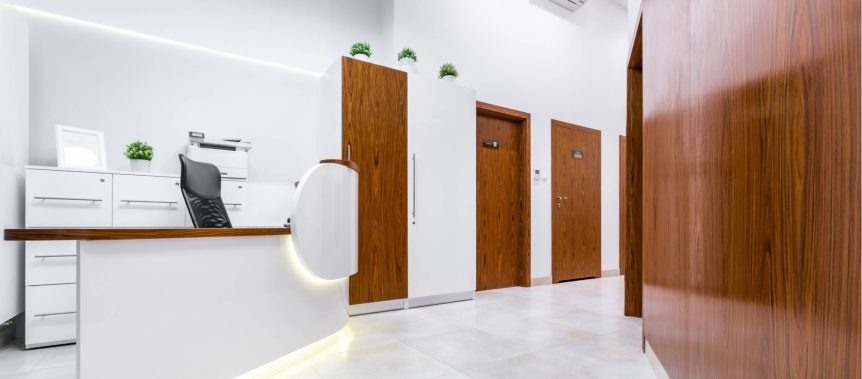WASHINGTON | by Joyce Frieden | MedPage Today | January 29, 2019
Orignial article can be found at https://www.healthleadersmedia.com

Safety net stakeholders urge a Senate committee to increase funding for community health centers and the National Health Service Corp., saying the programs are critical for providing healthcare in underserved areas.
The federal government needs to provide more reliable funding for community health centers and the National Health Service Corps, and more money wouldn’t hurt either, several witnesses said Tuesday at a Senate Health, Education, Labor, and Pensions (HELP) Committee hearing on healthcare providers in underserved communities.
“We were very grateful that in 2018 Congress generously brought the per-resident allocation back up to a more sustainable level,” said John B. Waits, MD, CEO of Cahaba Medical Care, a community health center with 10 sites, based in Centreville, Alabama.
“But the last two reauthorizations were each for 2 years and didn’t always provide sufficient certainty for teaching health centers to make binding 3-year commitments for the recruits we were authorized to hire and train … What a difference it will make if Congress gives us stable funding for 5 years. We can budget more efficiently and keep our doors open.”
“I’m here to ask your help in funding this incredibly important program,” said Andrea Anderson, MD, director of family medicine at Unity Health Care, a CHC here, and part of the center’s graduate medical education faculty. “Without action before October, the NHSC will once again face a funding cliff. … I ask you to continue expanding funding for the NHSC to ensure that all the current applicants are funded. It’s imperative to the health of our nation that we do not miss this opportunity.” She noted that under current funding, the NHSC can only fund 10% of its scholarship applicants and less than half of its loan applicants.
Anderson’s enthusiasm for the NHSC, which recruits physicians to serve in medically underserved areas, came from her own involvement with it. “I signed my NHSC contract in 1997 and came to Unity in 2004 to fulfill my obligation,” she explained. “That’s a total of nearly 22 years of NHSC … By making it possible for physicians like me to serve these populations, NHSC helps [with] workforce shortages and social determinants of health.”
The corps includes other providers such as physician assistants, nurse practitioners, and dentists, and serves populations in places such as critical access hospitals, mental health centers, prisons, and rural health clinics — “places where primary care is needed most,” she said, adding that because underrepresented minority students are more likely to serve populations similar to their own cultural background, the corp’s presence “is impactful and inspirational to the next generation.”
Committee members from both sides of the aisle seemed predisposed to hearing the witnesses’ message. “Community health clinics are one way [people] can have affordable healthcare close to home,” said committee chairman Sen. Lamar Alexander (R-Tenn.), who recently announced he would not seek re-election in 2020. “We must act by the end of September to make sure clinics receive this funding to keep their doors open.”
Alexander said he and Sen. Patty Murray (D-Wash.), the committee’s ranking member, are planning to introduce legislation to fund community health centers for 5 years at $4 billion a year; it would also fund the NHSC for 5 years.
Murray said several of the most vulnerable clinics in her state are at risk of closing. “We need to do more to provide stability … I’m glad Sen. Alexander and I are able to do just that … Funding these programs for the next 5 years will give health centers greater confidence they can hire the people they need.”
Sen. Bill Cassidy, MD (R-La.), asked why, if the average resident at a health center earns $57,000 per year, it costs CHCs $150,000 to employ a resident. “How can I defend that [difference]?” he asked.
Much of the added cost can be attributed to fringe benefits and malpractice insurance, said Waits. “And interns see about three patients a day whereas faculty members see 15 to 20,” so that is another cost to the facility.
Sen. Lisa Murkowski (R-Alaska) expressed envy for states with lots of community health centers. “We struggle in Alaska to be able to attract those good folks,” she said. “We would like to have them up north and we don’t have a medical school [ to attract people] and that’s not going to happen anytime soon.” She asked what she could do to solve the problem.
Waits suggested that one way to recruit would be to set up “teaching health centers” where residents could get primary care training, but said stable funding would be needed. “If we were going to set up a teaching health center in Alaska, we would need to know that if we take 2 to 3 years to get set up as a teaching institution and then start recruiting first, second, or third-year students, we’ve used up 5 years,” he said. “It could be done if there was the stability there.”
Guaranteed funding for the NHSC loan repayment program also would help, said Dennis Freeman, PhD, CEO of Cherokee Health Systems, a group of community health centers based in Knoxville, Tennessee. “If [centers] could use NHSC as a recruitment tool, I think it would really help.”
“WHAT A DIFFERENCE IT WILL MAKE IF CONGRESS GIVES US STABLE FUNDING FOR 5 YEARS. WE CAN BUDGET MORE EFFICIENTLY AND KEEP OUR DOORS OPEN.” JOHN B WAITS, MD, CEO OF CAHABA MEDICAL CARE, A COMMUNITY HEALTH CENTER BASED IN CENTERVILLE, ALABAMA.
Share this Post













